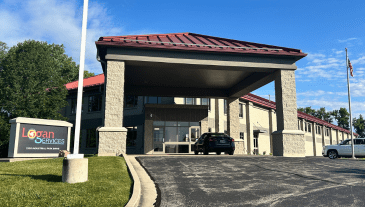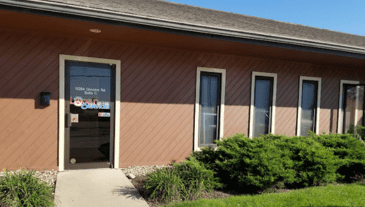A furnace pilot light provides the ignition source for the gas burners that heat up the air in your furnace. The small flame stays lit to provide an instant spark for gas furnace heating cycles, avoiding the need to restart an electric igniter each time the thermostat calls for heat. This enables reliable, efficient ignition, avoiding components prone to failure. It also gives visual confirmation of proper gas flow by monitoring the flame—like the familiar pilot light on a household gas stove.
Learning where these lights hide and why they mysteriously disappear will help you troubleshoot and relight dormant furnaces.
Typical Furnace Pilot Light Locations
Pilot light placement differs based on furnace design but typically sits near the gas burner assembly under a protective metal covering:
- Floor Furnaces: In the center underneath burners
- Wall Furnaces: Behind the bottom grill panel
- Forced-Air Furnaces: Near the main burner tray
Focus your search for the pilot on areas around suspected gas valves or inspection windows with views of the flames during operation. The owner’s manual for your specific model should detail the layout.
Why Your Furnace Pilot Light is Hard to Find
Furnace manufacturers intentionally hide pilot lights out of sight for both safety and aesthetic reasons:
- Sheet metal housing panels and wire grills fully enclose and obscure the small flame to prevent accidental contact with the ignition source.
- Small pilot flames tuck neatly under burners and behind panels to remain inconspicuous for sleek, modern appearances.
- Protective covers blend seamlessly into appliance visual designs, completely concealing exposed pilot flames.
While clever furnace engineering intentionally conceals pilot flames, homeowners can discover the location of even well-hidden pilot lights with some helpful decoding tips. Understanding furnace models, studying manuals, and knowing typical pilot placements based on furnace type provide guidance to rediscover a dormant flame.
Signs Your Pilot Light Went Out
A suddenly ice-cold household likely indicates an extinguished pilot light, causing the entire furnace to halt operations. Specifically, watch for these warning signs:
- No ignition when kicking on the thermostat: If you hear the thermostat call for heat but don’t hear the ignition sequence or smell gas burning, the dormant pilot can’t jumpstart the furnace.
- No gas smell from the dormant furnace: When pilots extinguish, trademark natural gas or propane odors also cease since fuel no longer flows.
- Unlit pilot assembly upon inspection: Pull off front panels to directly inspect for a tiny steady flame at the end of narrow tubing near the gas valve if other signs manifest.
Without the constant small ignition source from a healthy pilot light, the furnace cannot receive the signal to fire up the burners that generate heat. Therefore, freezing indoor temperatures accompanying the above pilot light outage indications likely leave homeowners out in the cold.
How to Find and Relight Your Furnace Pilot
Use the following tips to locate and restart an unlit pilot:
- Follow the small metal tubing near the intake valve to track down the pilot assembly. The valve connects to the pilot tubing that leads straight to the small igniter.
- Inspect burner compartments with a flashlight for easier visibility behind housing panels.
- Reference manufacturer instructions for layouts specific to your furnace make and model.
- Attempt relighting only after confirming dormancy and ventilating gas smells. Use long fireplace matches or piezo igniters after validating fuel flow.
- Call a technician if the pilot fails to hold a flame for more than a day following thorough troubleshooting or re-lighting attempts.
Furnaces hide their pilot lights by necessity, but learning typical placements and using clever inspection techniques easily overcomes the common dilemma of the ghostly extinguished pilot. Read our guide for more in-depth tips on relighting your pilot light.
When Should You Call a Furnace Technician?
While the steps above help many homeowners relight tricky house furnace pilot lots, know when to call the pros:
- If unable to find the pilot assembly location after inspecting all burner compartments and referencing furnace instructions.
- If you have recurrent pilot light issues where re-lighting attempts fail repeatedly over days.
- For unusual pilot outages requiring full-system troubleshooting of thermopiles, gas valves, venting issues, or safety sensor failures.
Heating technicians equipped with inspection cameras, combustion analyzers, and pressure gauges thoroughly assess questionable and repeatedly problematic pilot assemblies. Let the experts handle signs of flow blockages, component failures, or suspected gas leaks indicated by pilot issues. If your pilot light keeps going out, you may need to consult with a furnace specialist—read this guide for more information.
The Logan Difference
When your furnace pilot light mysteriously goes out, trust the experts at Logan Services A/C, Heat & Plumbing for relighting assistance. Our certified technicians thoroughly understand pilot assembly troubleshooting for all furnace system makes and models.
With over 50 years of experience installing and maintaining heating systems and cooling equipment in Dayton, Cincinnati, and Columbus, Logan is trusted by homeowners for all their HVAC needs. We set ourselves apart through quality workmanship and caring service.
Here’s why homeowners trust Logan Services A/C, Heat & Plumbing for HVAC support:
- Factory-trained technicians available 24/7 for emergency furnace repairs and pilot light issues.
- Our “Quality Trifecta” culture, which centers on teamwork, communication, and commitment, ensures impeccable workmanship.
- We educate homeowners on new systems and provide full warranty details for true peace of mind.
- As Ohio’s largest volume Trane dealer and Mitsubishi Electric Diamond Elite Contractor, our expertise is unmatched.
- Our family-owned business offers personalized maintenance to maximize system performance.
- With 50+ years as an accredited industry leader, Logan delivers confidence in top-tier HVAC service.
If you cannot locate or relight your furnace’s hidden pilot light assembly, contact Logan for guaranteed precise troubleshooting and ignition assistance.
Frequently Asked Questions
Where is the best place to look first for my furnace pilot light?
Start near the main burner assembly and gas valve, following the small metal tubing that leads directly to the pilot light. Referencing your specific model’s owner’s manual provides tailored direction to the pilot location.
Can I relight my own furnace’s pilot light?
Healthy adults can safely relight most pilot lights after viewing training materials. However, if you smell gas, attempted relighting fails, or issues recur quickly, call trained HVAC technicians to provide expertise and specialized equipment for assessment.
Why does my furnace pilot light go out repeatedly?
Frequent pilot light outages often indicate bigger issues like problems with thermopile sensors, flue venting blockages, ongoing fuel flow deficiencies, or component wear and tear requiring professional service.




















